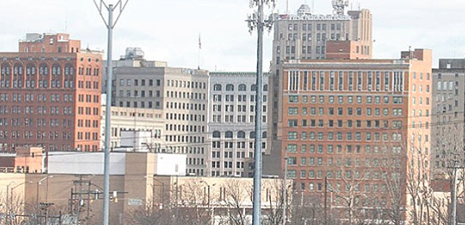Leaders should not give up on SMAR2T investment in Youngstown and Valley

We can easily under- stand why stakeholders in a planned $20 million urban renewal project in downtown Youngstown and the near North Side might be feeling a bit perplexed and perturbed these days.
After all, a grant proposal to the U.S. Department of Transportation that’s been in the planning and polishing stages for more than two years was summarily rejected by the federal government.
The crushing news came last week when administrators of the Transportation Investment Generating Economic Recovery (TIGER) program of DOT announced 43 projects in 41 states that will share in $500 million in discretionary grant funds to modernize infrastructure, improve safety and create jobs.
For the second year in a row, the worthy $10.3 million Youngstown proposal dubbed the SMAR2T Network was noticeably absent from the list of funded projects.
The SMAR2T Network would connect Strategic, Medical, Manufacturing, Academic, Residential, Recreational, Technology, and Employment centers in downtown Youngstown north to Youngstown State University and end at St. Elizabeth Youngstown Hospital.
In short, the funding – coupled with a $10.2 million match in local dollars and in-kind contributions – would have financed infrastructure, safety and aesthetic improvements to the central city’s greatest assets.
The news of rejection for the second consecutive year hits hard. After all, many of the city’s and region’s major players spent countless hours in the proposal’s creation and improvement after it was rejected in fiscal year 2016 Tiger awards.
The Eastgate Regional Council of Governments had partnered with the city of Youngstown, Eastern Gateway Community College, Mercy Health, Mill Creek MetroParks, Western Reserve Transit Authority, YSU, the Youngstown Business Incubator and Mill Creek MetroParks for the grant.
The project would have had a transformative impact on the central business district of the city. It would have created a corridor tightly linking a major medical center to a major urban university to a growing community college to a world-renowned business incubator to a public transportation system and finally to one of the oldest and largest urban parks in the country.
COMMITMENT TO PROJECT
In the aftermath of the disappointing news, one thing is certain: The project should not be written off. Toward that end, the city of Youngstown is committed to a major overhaul of Fifth Avenue in the university corridor akin to the recently completed face-lift of Wick Avenue, which earlier this week won a 2018 Engineering Excellence Award from the American Council of Engineering Excellence. The Fifth Avenue project has at least $3 million in federal funds to begin that segment of the SMAR2T project.
Unfortunately, the entire project cannot be completed with exclusively local funding. That’s why it’s incumbent that those who had a hand in drafting the grant proposal learn first hand from TIGER officials specific reasons why other communities outpaced the Youngstown proposal. A similar project, for example, to make infrastructure improvements in downtown Akron was funded two years in a row to the tune of $14 million.
If the TIGER program survives efforts by the administration of President Donald J. Trump to eliminate it next year, those stakeholders should use the knowledge they glean to fine tune the proposal and resubmit it next year. If the program is eliminated, they should work tirelessly to find other potential public and private grant sources to make the project a reality in the long term.
Leaders from Youngstown Mayor Jamael Tito Brown to U.S. Rep. Tim Ryan of Howland, D-13th, to U.S. Sen. Sherrod Brown, D-Cleveland, all have expressed strong support for the SMAR2T project and for continuing efforts to find the needed grant funds through TIGER or other programs to carry it through to completion.
We would remind DOT leaders that Akron, Cleveland, Kent and Pittsburgh each has received sizeable shares of the TIGER pot in recent years. We would hate to think that even one iota of politics played a role in the final funding decision against Youngstown.
After all, strengthening links among the downtown vicinity’s most-successful institutions would narrow the psychological distance among them and invite additional development, hustle and bustle. As such, leaders behind the TIGER project should not give up on this SMAR2T investment in the future of Youngstown and the Mahoning Valley.
 43
43
